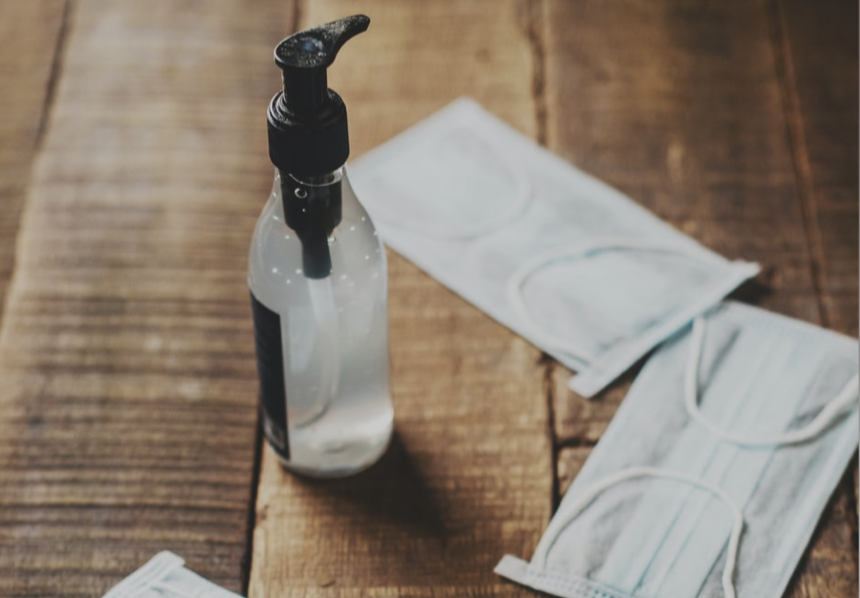How to manage skin irritation from masks and hand washing
Winter weather is often associated with dry, chapped skin. The increased frequency of hand washing and use of personal protective equipment (PPE) during this pandemic adds additional challenges to our skin’s health this time of year. Consider some of these strategies to sooth and protect your skin:
General prevention strategies to minimize skin irritation
Keep skin clean and well hydrated. (The Environmental Working Group has a wonderful app that can be used to find safe and green products.)
Keep showers or baths short, limiting to about five to ten minutes, using warm NOT hot water, and using mild soaps.
Avoid coming into direct contact with chemicals that are used for surface disinfection. For example, wear gloves when using disinfecting surface wipes or cleaning solutions.
Wear gloves when coming into contact with water for purposes other than to wash your hands (e.g., washing dishes, washing a child’s hair, using cleaning products) to help keep the skin barrier intact. Consider wearing a cotton liner under your gloves to prevent irritation from sweat if you are wearing gloves for long periods of time.
Use fragrance- and dye-free soaps, sanitizers, moisturizers, and laundry detergents. These are less likely to cause skin reactions. Avoid “unscented” products. These may use additives to mask smells that can cause irritation.
When possible, give skin a break from contact with water or PPE. For example, try to take a break from a mask for about 15 minutes every two hours, if safe and practical to do so.
Consider using a humidifier inside your home to increase moisture in the air.
If possible, avoid using PPE containing common culprits for skin irritation/reactions (e.g., latex or formaldehyde).
Know when to wash verses sanitize your hands
Frequent hand washing/sanitizing and long-term glove use can lead to a skin moisture imbalance.
Use alcohol-based hand sanitizer unless hands are visibly dirty. Hand sanitizer is less irritating than soap. Soap strips away natural oils. Alcohol-based hand sanitizers may sting, but are usually less likely to be associated with dermatitis than washing with soap and water.
Pat hands dry or allow hands to air dry instead of rubbing to avoid further irritation. Use warm water instead of hot. Frequent use of hot water can lead to excessively dry skin.
Avoid using hand sanitizer and soap one right after the other. Consecutive use increases skin damage.
Use moisturizer to help prevent or treat dry skin
Apply moisturizer liberally, regularly, and whenever skin feels dry. Lean towards creams and/or ointments over lotions. Lotions are less moisturizing.
After washing with soap and water, apply moisturizer while skin is still damp.
After sanitizer use, allow areas to completely dry before applying moisturizer, to avoid trapping the alcohol in the skin.
If moisturizers seem to increase irritation, look for ingredients associated with contact dermatitis (e.g., lanolin, fragrances, essential oils, propylene glycol, etc.).
Applying moisturizer twice in a row may provide additional benefit. Just wait 30 seconds or a minute between applications to allow time for initial absorption.
Apply moisturizer at least 30 minutes before putting PPE on to be sure it is fully absorbed and areas are dry.
Avoid using petrolatum-based moisturizers if using N95 masks, as this can interfere with mask integrity.
For severe hand dryness or to give hand skin a hydration boost, apply petrolatum and then put on gloves or socks. Consider doing this just before going to sleep.
Though data is not strong, rubbing olive or coconut oil on dry skin may help moisturize skin, especially the hands. Be sure to stop using these products if acne or irritation occurs.
Ways to prevent irritation from wearing face protection
Ensure PPE fits properly and avoid over-tightening masks, goggles, etc.
Make sure skin and PPE are clean and dry before putting on PPE.
Reference: PPE-Related Skin Irritation: Prevention and Treatment
Related articles:

